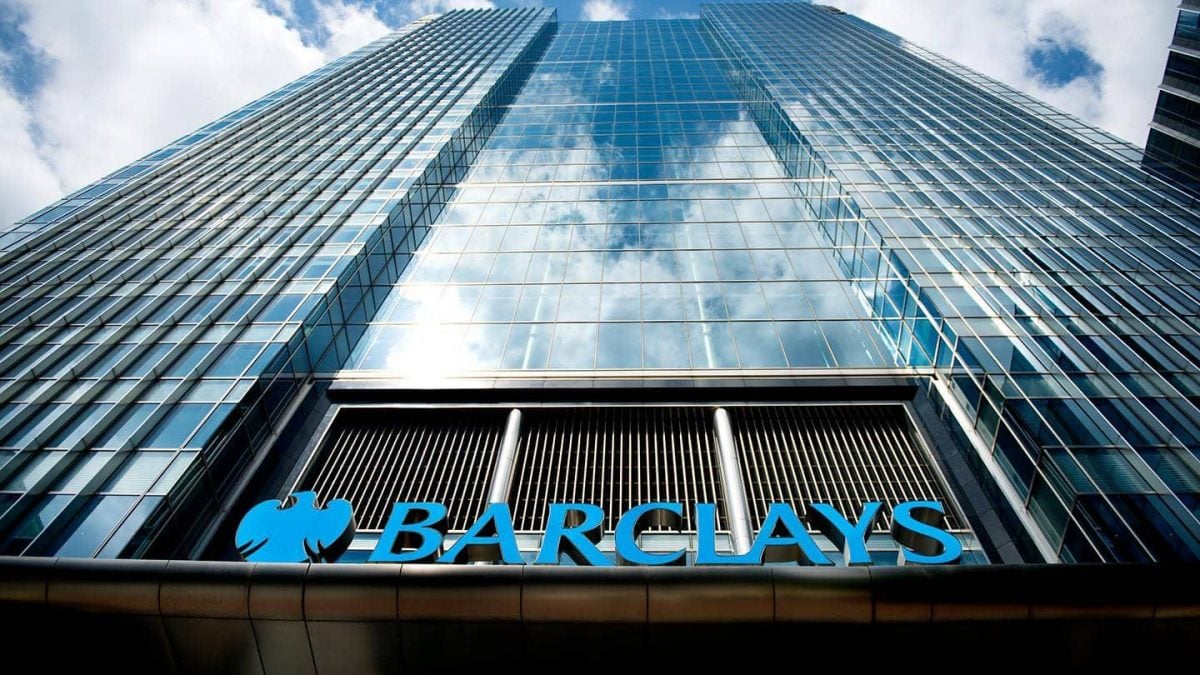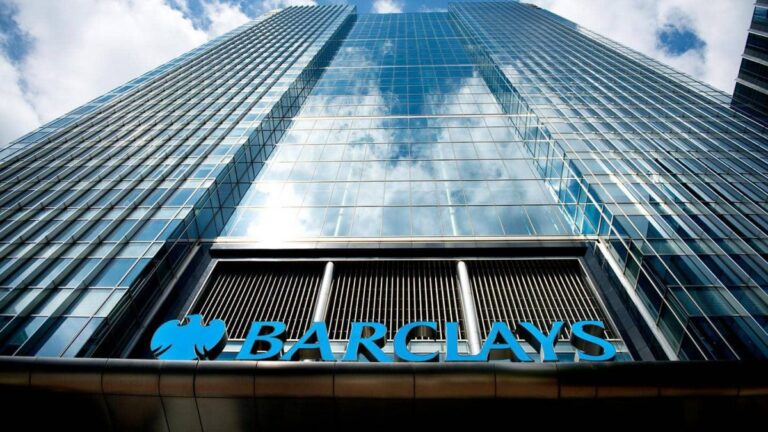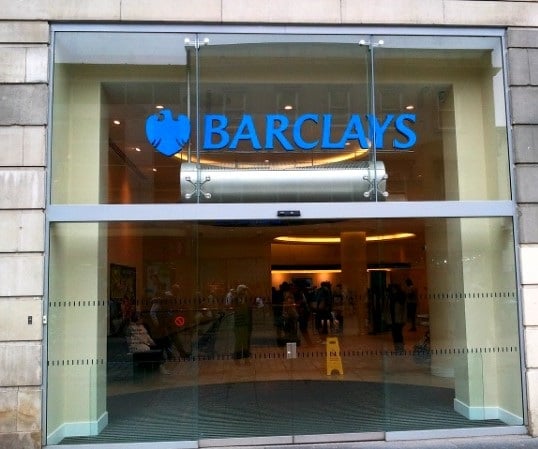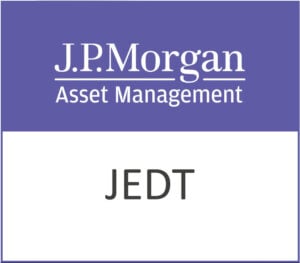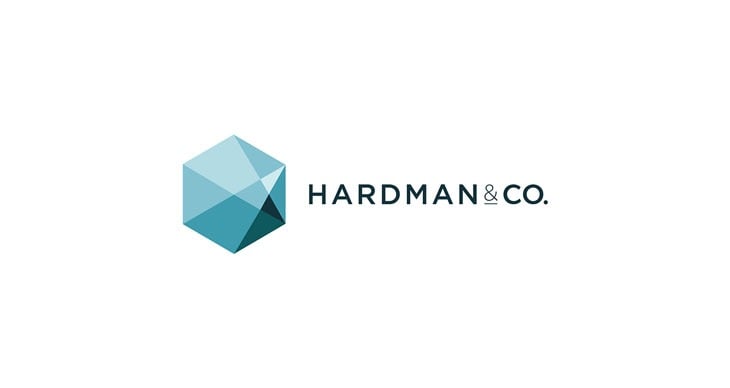Barclays PLC (LON:BARC) has announced its Interim Results Announcement.
Table of Contents
| Results Announcement | Page |
| Notes | 1 |
| Performance Highlights | 2 |
| Group Finance Director’s Review | 5 |
| Results by Business | |
| • Barclays UK | 7 |
| • Barclays UK Corporate | 10 |
| • Barclays Private Bank and Wealth Management | 11 |
| • Barclays Investment Bank | 12 |
| • Barclays US Consumer Bank | 14 |
| • Head Office | 16 |
| Quarterly Results Summary | 17 |
| Quarterly Results by Business | 18 |
| Performance Management | |
| • Margins and Balances | 25 |
| Risk Management | |
| • Risk Management and Principal Risks | 27 |
| • Credit Risk | 28 |
| • Market Risk | 49 |
| • Treasury and Capital Risk | 50 |
| Statement of Directors’ Responsibilities | 60 |
| Independent Review Report to Barclays PLC | 61 |
| Condensed Consolidated Financial Statements | 63 |
| Financial Statement Notes | 69 |
| Appendix: Non-IFRS Performance Measures | 90 |
| Shareholder Information | 98 |
Notes
The terms Barclays and Group refer to Barclays PLC together with its subsidiaries. Unless otherwise stated, the income statement analysis compares the six months ended 30 June 2025 to the corresponding six months of 2024 and balance sheet analysis as at 30 June 2025 with comparatives relating to 31 December 2024 and 30 June 2024. The abbreviations ‘£m’ and ‘£bn’ represent millions and thousands of millions of Pounds Sterling respectively; the abbreviations ‘$m’ and ‘$bn’ represent millions and thousands of millions of US Dollars respectively; and the abbreviations ‘€m’ and ‘€bn’ represent millions and thousands of millions of Euros respectively.
There are a number of key judgement areas, for example impairment calculations, which are based on models and which are subject to ongoing adjustment and modifications. Reported numbers reflect best estimates and judgements at the given point in time.
Relevant terms that are used in this document but are not defined under applicable regulatory guidance or International Financial Reporting Standards (IFRS) are explained in the results glossary, which can be accessed at home.barclays/investor-relations.
The information in this announcement, which was approved by the Board of Directors on 28 July 2025, does not comprise statutory accounts within the meaning of Section 434 of the Companies Act 2006. Statutory accounts for the year ended 31 December 2024, which contain an unmodified audit report under Section 495 of the Companies Act 2006 (which does not make any statements under Section 498 of the Companies Act 2006) have been delivered to the Registrar of Companies in accordance with Section 441 of the Companies Act 2006.
These results will be furnished on Form 6-K to the US Securities and Exchange Commission (SEC) as soon as practicable following publication of this document. Once furnished to the SEC, a copy of the Form 6-K will be available from the SEC’s website at www.sec.gov.
Barclays is a frequent issuer in the debt capital markets and regularly meets with investors via formal roadshows and other ad hoc meetings. Consistent with its usual practice, Barclays expects that from time to time over the coming quarter it will meet with investors globally to discuss these results and other matters relating to the Group.
Non-IFRS performance measures
Barclays’ management believes that the non-IFRS performance measures included in this document provide valuable information to the readers of the financial statements as they enable the reader to identify a more consistent basis for comparing the businesses’ performance between financial periods and provide more detail concerning the elements of performance which the managers of these businesses are most directly able to influence or are relevant for an assessment of the Group. They also reflect an important aspect of the way in which operating targets are defined and performance is monitored by Barclays’ management. However, any non-IFRS performance measures in this document are not a substitute for IFRS measures and readers should consider the IFRS measures as well. Refer to the appendix on pages 89 to 96 for definitions and calculations of non-IFRS performance measures included throughout this document, and reconciliations to the most directly comparable IFRS measures.
Forward-looking statements
This document contains certain forward-looking statements within the meaning of Section 21E of the US Securities Exchange Act of 1934, as amended, and Section 27A of the US Securities Act of 1933, as amended, with respect to the Group. Barclays cautions readers that no forward-looking statement is a guarantee of future performance and that actual results or other financial condition or performance measures could differ materially from those contained in the forward-looking statements. Forward-looking statements can be identified by the fact that they do not relate only to historical or current facts. Forward-looking statements sometimes use words such as ‘may’, ‘will’, ‘seek’, ‘continue’, ‘aim’, ‘anticipate’, ‘target’, ‘projected’, ‘expect’, ‘estimate’, ‘intend’, ‘plan’, ‘goal’, ‘believe’, ‘achieve’ or other words of similar meaning. Forward-looking statements can be made in writing but also may be made verbally by directors, officers and employees of the Group (including during management presentations) in connection with this document. Examples of forward-looking statements include, among others, statements or guidance regarding or relating to the Group’s future financial position, business strategy, income levels, costs, assets and liabilities, impairment charges, provisions, capital leverage and other regulatory ratios, capital distributions (including policy on dividends and share buybacks), return on tangible equity, projected levels of growth in banking and financial markets, industry trends, any commitments and targets (including environmental, social and governance (“ESG”) commitments and targets), plans and objectives for future operations, International Financial Reporting Standards (“IFRS”) and other statements that are not historical or current facts. By their nature, forward-looking statements involve risk and uncertainty because they relate to future events and circumstances. Forward-looking statements speak only as at the date on which they are made. Forward-looking statements may be affected by a number of factors, including, without limitation: changes in legislation, regulations, governmental and regulatory policies, expectations and actions, voluntary codes of practices and the interpretation thereof, changes in IFRS and other accounting standards, including practices with regard to the interpretation and application thereof and emerging and developing sustainability reporting standards (including emissions accounting methodologies); changes in tax laws and practice; the outcome of current and future legal proceedings and regulatory investigations; the Group’s ability along with governments and other stakeholders to measure, manage and mitigate the impacts of climate change effectively or navigate inconsistencies and conflicts in the manner in which climate policy is implemented in the regions where the Group operates, including as a result of the adoption of anti-ESG rules and regulations, or other forms of governmental and regulatory action against ESG policies; environmental, social and geopolitical risks and incidents and similar events beyond the Group’s control; financial crime; the impact of competition in the banking and financial services industry; capital, liquidity, leverage and other regulatory rules and requirements applicable to past, current and future periods; UK, US, Eurozone and global macroeconomic and business conditions, including inflation; volatility in credit and capital markets; market related risks such as changes in interest rates and foreign exchange rates; reforms to benchmark interest rates and indices; higher or lower asset valuations; changes in credit ratings of any entity within the Group or any securities issued by it; changes in counterparty risk; changes in consumer behaviour; changes in trade policy, including the imposition of tariffs or other protectionist measures; the direct and indirect consequences of the conflicts in Ukraine and the Middle East on European and global macroeconomic conditions, political stability and financial markets; changes in US legislation and policy following the US elections in 2024; developments in the UK’s relationship with the European Union; the risk of cyberattacks, information or security breaches, technology failures or operational disruptions and any subsequent impact on the Group’s reputation, business or operations; the Group’s ability to access funding; and the success of acquisitions (including the acquisition of Tesco Bank completed in November 2024), disposals, joint ventures and other strategic transactions. A number of these factors are beyond the Group’s control. As a result, the Group’s actual financial position, results, financial and non-financial metrics or performance measures or its ability to meet commitments and targets may differ materially from the statements or guidance set forth in the Group’s forward-looking statements. In setting its targets and outlook for the period 2024-2026, Barclays has made certain assumptions about the macroeconomic environment, including, without limitation, inflation, interest and unemployment rates, the different markets and competitive conditions in which Barclays operates, and its ability to grow certain businesses and achieve costs savings and other structural actions. Additional risks and factors which may impact the Group’s future financial condition and performance are identified in Barclays PLC’s filings with the US Securities and Exchange Commission (“SEC”) (including, without limitation, Barclays PLC’s Annual Report on Form 20-F for the financial year ended 31 December 2024), which are available on the SEC’s website at www.sec.gov.
Subject to Barclays PLC’s obligations under the applicable laws and regulations of any relevant jurisdiction (including, without limitation, the UK and the US) in relation to disclosure and ongoing information, we undertake no obligation to update publicly or revise any forward-looking statements, whether as a result of new information, future events or otherwise.
Performance Highlights
Barclays delivered a return on tangible equity (RoTE) of 13.2% in H125, and announced £1.4bn total capital distributions to shareholders in respect of the first half of 2025
C. S. Venkatakrishnan, Group Chief Executive, commented
“We remain on track to achieve the objectives of our three-year plan, delivering structurally higher and more stable returns for our investors. At the mid-point of the plan, with six quarters of consistent execution, we have achieved over half of the c.£30bn planned UK risk weighted assets (RWAs) growth, half of the target income growth and realised two-thirds of the £2bn planned gross cost efficiency savings. In Q225 we delivered RoTE of 12.3%; year-on-year income grew by 14% and profit before tax by 28%. Earnings per share (EPS) grew by 41% reflecting profit growth and the impact of share buybacks, with tangible net asset value (TNAV) per share growth of 13%. Given strong organic capital generation and common equity tier 1 (CET1) ratio of 14.0%, today we announced a further £1bn share buyback and a half year dividend of 3.0p per share, equating to £1.4bn of total capital distributions in respect of the first half of 2025, a 21% increase year-on-year.”
• H125 Group statutory RoTE of 13.2%, with EPS improving to 24.7p (H124: 18.6p)
– Q225 Group statutory RoTE of 12.3%
• Completed the £1bn share buyback announced with FY24 Results. Announced intention to initiate a share buyback of up to £1bn (H124: £750m) and a dividend of 3.0p per share for H125 (H124: 2.9p), on track to deliver progressive increase in total capital returns versus 2024
• Achieved £17bn1 of the c.£30bn planned UK RWA growth, of which £10bn was organic growth
• H125 Group loan loss rate (LLR) of 52bps (H124: 45bps), within the through the cycle range of 50-60bps
• H125 Group cost: income ratio improved to 58% (H124: 62%) driven by positive operating leverage (FY25 guidance of c.61%)
– Delivered c.£350m of gross cost efficiency savings in H125 (FY25 guidance of c.£500m)
• Strong balance sheet with CET1 ratio of 14.0%
– Taking into account the impact of the £1bn share buyback announced today, the CET1 ratio as of 30 June 2025 would be reduced by c.30bps to 13.7%, in line with the 13-14% target range
• TNAV per share of 384p (December 2024: 357p)
Key financial metrics:
| Income | Profit before tax | Attributable profit | Cost: income ratio | LLR | RoTE | EPS | TNAV per share | CET1 ratio | Total capital return | |
| Q225 | £7.2bn | £2.5bn | £1.7bn | 59% | 44bps | 12.3% | 11.7p | 384p | 14.0% | £1.4bn |
| H125 | £14.9bn | £5.2bn | £3.5bn | 58% | 52bps | 13.2% | 24.7p |
Q225 Performance highlights:
• Group RoTE was 12.3% (Q224: 9.9%) with profit before tax of £2.5bn (Q224: £1.9bn). All divisions delivered double-digit RoTE in Q225
• Group income of £7.2bn was up 14% year-on-year2, with Group net interest income (NII) excluding Barclays Investment Bank and Head Office of £3.1bn, up 12% year-on-year
– Barclays UK income increased 12%, driven by higher structural hedge income and the Tesco Bank acquisition
– Barclays UK Corporate Bank (UKCB) income increased 17%, reflecting higher average deposit and lending balances, and higher structural hedge income
– Barclays Private Bank and Wealth Management (PBWM) income increased 9%, reflecting higher client balances and transactional activity
– Barclays Investment Bank (IB) income increased 10%, driven by Global Markets, partially offset by Investment Banking
– Barclays US Consumer Bank (USCB) income was stable, reflecting card balance growth offset by the strengthening of GBP against USD. On a USD basis income was up 7%
• Group total operating expenses were £4.2bn, up 5% year-on-year, with a cost: income ratio of 59% (Q224: 63%)
– Group operating costs increased 4% to £4.1bn, reflecting Tesco Bank costs, further investment spend and business growth, inflation, partially offset by c.£200m of cost efficiency savings
• Credit impairment charges were £0.5bn (Q224: £0.4bn) with an LLR of 44bps (Q224: 38bps), including the impact of Tesco Bank
| 1 | Represents RWAs from business growth across Barclays UK, Private Bank and Wealth Management, and UK Corporate Bank, excludes the effects of securitisations, model updates and other methodological changes. Also excludes additional Operational Risk RWAs related to organic growth. |
| 2 | Q224 included a £220m loss on sale of the performing Italian retail mortgage portfolio and a £20m loss on disposal from the German consumer finance business. |
H125 Performance highlights:
• Group RoTE was 13.2% (H124: 11.1%) with profit before tax of £5.2bn (H124: £4.2bn)
• Group income of £14.9bn was up 12% year-on-year1 with Group NII excluding Barclays Investment Bank and Head Office of £6.1bn, up 13% year-on-year
• Group total operating expenses were £8.6bn, up 5% year-on-year
– Group operating costs increased 5% to £8.4bn, reflecting Tesco Bank costs, further investment spend and business growth, inflation and the c.£50m expense for the employee share grant announced at FY24 Results, partially offset by c.£350m of cost efficiency savings
• Credit impairment charges were £1.1bn (H124: £0.9bn) with an LLR of 52bps (H124: 45bps) including the impact of Tesco Bank
• CET1 ratio of 14.0% (December 2024: 13.6%), with RWAs of £353.0bn (December 2024: £358.1bn) and TNAV per share of 384p (December 2024: 357p)
Group financial guidance and targets2:
2025 guidance
• Returns: RoTE of c.11%
• Capital returns: progressive increase in total capital returns versus 2024
• Income: Group NII excluding IB and Head Office of greater than £12.5bn, of which Barclays UK NII of greater than £7.6bn
• Costs: Group cost: income ratio of c.61%. This includes total gross efficiency savings of c.£500m in 2025
• Impairment: LLR of 50-60bps through the cycle
• Capital: CET1 ratio target range of 13-14%
2026 targets
• Returns: RoTE of greater than 12%
• Capital returns: plan to return at least £10bn of capital to shareholders between 2024 and 2026, through dividends and share buybacks, with a continued preference for buybacks
– Plan to keep total dividend stable at 2023 level in absolute terms, with progressive dividend per share growth driven through share count reduction as a result of increased share buybacks
– Dividends will continue to be paid semi-annually
– This multi-year plan is subject to supervisory and Board approval, anticipated financial performance and our published CET1 ratio target range of 13-14%
• Income: Group total income of c.£30bn
• Costs: Group cost: income ratio of high 50s in percentage terms, implying Group total operating expenses of c.£17bn, based on targeted Group total income of c.£30bn. Cost target includes total gross efficiency savings of c.£2bn by 2026
• Impairment: expect an LLR of 50-60bps through the cycle
• Capital: CET1 ratio target range of 13-14%
– Targeting IB RWAs of c.50% of Group RWAs in 2026
– Impact of regulatory change on RWAs in line with our prior guidance of c.£19-26bn
– c.£3-10bn RWAs from Basel 3.1, with implementation expected from 1 January 2027
– c.£16bn RWAs from USCB moving to an Internal Ratings Based (IRB) model, subject to model build and portfolio changes, implementation could be beyond 2026
– 0.1% increase in Pillar 2A from Q125 until model implementation
| 1 | H124 included a £220m loss on sale of the performing Italian retail mortgage portfolio and a £20m loss on disposal from the German consumer finance business. |
| 2 | Our targets and guidance are based on management’s current expectations as to the macroeconomic environment and the business and may be subject to change. |
| Barclays Group results | Half year ended | Three months ended | |||||
| 30.06.25 | 30.06.24 | 30.06.25 | 30.06.24 | ||||
| £m | £m | % Change | £m | £m | % Change | ||
| Barclays UK | 4,193 | 3,713 | 13 | 2,119 | 1,887 | 12 | |
| Barclays UK Corporate Bank | 1,003 | 877 | 14 | 519 | 443 | 17 | |
| Barclays Private Bank and Wealth Management | 697 | 632 | 10 | 348 | 320 | 9 | |
| Barclays Investment Bank | 7,180 | 6,347 | 13 | 3,307 | 3,019 | 10 | |
| Barclays US Consumer Bank | 1,687 | 1,678 | 1 | 823 | 819 | – | |
| Head Office | 136 | 30 | 71 | (164) | |||
| Total income | 14,896 | 13,277 | 12 | 7,187 | 6,324 | 14 | |
| Operating costs | (8,407) | (7,997) | (5) | (4,149) | (3,999) | (4) | |
| UK regulatory levies | (96) | (120) | 20 | – | – | – | |
| Litigation and conduct | (87) | (64) | (36) | (76) | (7) | ||
| Total operating expenses | (8,590) | (8,181) | (5) | (4,225) | (4,006) | (5) | |
| Other net income/(expenses) | 9 | 16 | (44) | (9) | 4 | ||
| Profit before impairment | 6,315 | 5,112 | 24 | 2,953 | 2,322 | 27 | |
| Credit impairment charges | (1,112) | (897) | (24) | (469) | (384) | (22) | |
| Profit before tax | 5,203 | 4,215 | 23 | 2,484 | 1,938 | 28 | |
| Tax charge | (1,173) | (892) | (32) | (552) | (427) | (29) | |
| Profit after tax | 4,030 | 3,323 | 21 | 1,932 | 1,511 | 28 | |
| Non-controlling interests | (23) | (26) | 12 | (21) | (23) | 9 | |
| Other equity instrument holders | (484) | (510) | 5 | (252) | (251) | – | |
| Attributable profit | 3,523 | 2,787 | 26 | 1,659 | 1,237 | 34 | |
| Performance measures | |||||||
| Return on average tangible shareholders’ equity | 13.2% | 11.1% | 12.3% | 9.9% | |||
| Average tangible shareholders’ equity (£bn) | 53.5 | 50.1 | 53.9 | 49.8 | |||
| Cost: income ratio | 58% | 62% | 59% | 63% | |||
| Loan loss rate (bps) | 52 | 45 | 44 | 38 | |||
| Basic earnings per ordinary share | 24.7p | 18.6p | 11.7p | 8.3p | |||
| Dividend per share | 3.0p | 2.9p | 3 | ||||
| Share buybacks announced (£m) | 1,000 | 750 | 33 | ||||
| Total payout equivalent per share | c.10.1p | c.8.0p | 26 | ||||
| Basic weighted average number of shares (m) | 14,262 | 14,972 | (5) | 14,211 | 14,915 | (5) | |
| Period end number of shares (m) | 14,180 | 14,826 | (4) | ||||
| Period end tangible shareholders’ equity (£bn) | 54.5 | 50.4 | |||||
| As at 30.06.25 | As at 31.12.24 | As at 30.06.24 | |
| Balance sheet and capital management1 | £bn | £bn | £bn |
| Loans and advances at amortised cost | 417.8 | 414.5 | 399.5 |
| Loans and advances at amortised cost impairment coverage ratio | 1.2% | 1.2% | 1.4% |
| Total assets | 1,598.7 | 1,518.2 | 1,576.6 |
| Deposits at amortised cost | 564.5 | 560.7 | 557.5 |
| Tangible net asset value per share | 384p | 357p | 340p |
| Common equity tier 1 ratio | 14.0% | 13.6% | 13.6% |
| Common equity tier 1 capital | 49.5 | 48.6 | 47.7 |
| Risk weighted assets | 353.0 | 358.1 | 351.4 |
| UK leverage ratio | 5.0% | 5.0% | 5.0% |
| UK leverage exposure | 1,259.8 | 1,206.5 | 1,222.7 |
| Funding and liquidity | |||
| Group liquidity pool (£bn) | 333.7 | 296.9 | 328.7 |
| Liquidity coverage ratio2 | 177.7% | 172.4% | 167.0% |
| Net stable funding ratio3 | 135.6% | 134.9% | 136.4% |
| Loan: deposit ratio | 74% | 74% | 72% |
| 1 | Refer to pages 55 to 59 for further information on how capital, RWAs and leverage are calculated. |
| 2 | Represents average of the last 12 spot month end ratios. From June 2025, Barclays is prospectively implementing a new methodology for calculating net stress outflows related to secured financing transactions in the liquidity coverage ratio (LCR), see page 50 for additional information. |
| 3 | Represents average of the last four spot quarter end positions. |
Group Finance Director’s Review
H125 Group performance
• Barclays delivered a profit before tax of £5,203m (H124: £4,215m), RoTE of 13.2% (H124: 11.1%) and EPS of 24.7p (H124: 18.6p)
• The Group has a diverse income profile across businesses and geographies. The appreciation of average GBP against USD negatively impacted income and profits, and positively impacted credit impairment charges and total operating expenses
• Group statutory income increased 12% to £14,896m driven by higher income in Global Markets across FICC and Equities, higher structural hedge income and Tesco Bank income
• Group total operating expenses increased to £8,590m (H124: £8,181m)
– Group operating costs increased 5% to £8,407m, reflecting Tesco Bank costs, further investment spend and business growth, inflation and the c.£50m expense for the employee share grant announced at FY24 Results, partially offset by c.£350m of cost efficiency savings
• Credit impairment charges increased to £1,112m (H124: £897m), primarily driven by the acquisition of Tesco Bank and elevated US macroeconomic uncertainty, including the post model adjustment booked in Q125. Total coverage ratio remains stable at 1.2% (December 2024: 1.2%)
• The effective tax rate (ETR) was 22.5% (H124: 21.2%)
• Attributable profit was £3,523m (H124: £2,787m)
• Total assets increased to £1,598.7bn (December 2024: £1,518.2bn), driven by an increase in trading activity in IB and an increase in the liquidity pool from increased wholesale funding. This was partially offset by a reduction in derivative assets and the strengthening of spot GBP against USD
• TNAV per share increased to 384p (December 2024: 357p) including EPS of 24.7p and 11p benefit from the cash flow hedging reserve. These were partially offset by a 6p reduction from the FY24 dividend paid during H125 and net negative other reserve movements
Group capital and leverage
• The CET1 ratio increased by c.50bps to 14.0% (December 2024: 13.6%) as CET1 capital increased by £1.0bn to £49.5bn and RWAs decreased by £5.1bn to £353.0bn:
– c.100bps increase from attributable profit
– c.50bps decrease driven by shareholder distributions including the completed £1.0bn share buyback announced with FY24 results and an accrual towards the total 2025 dividend
– c.20bps increase from other CET1 capital movements, including an increase in the fair value through other comprehensive income reserve
– c.10bps decrease as a result of a £3.7bn increase in RWAs, excluding the impact of foreign exchange movements, primarily driven by continued lending growth in Barclays UK and UKCB and trading activity in IB, partially offset by the disposal of the German consumer finance business
– A £1.6bn decrease in CET1 capital due to a decrease in the currency translation reserve was partially offset by a £8.8bn decrease in RWAs as a result of foreign exchange movements
• The UK leverage ratio remained stable at 5.0% (December 2024: 5.0%), as the leverage exposure increased by £53.3bn to £1,259.8bn (December 2024: £1,206.5bn) offset by an increase of £2.2bn in Tier 1 capital. The increase in leverage exposure was largely driven by an increase in trading activity in IB, partially offset by the strengthening of spot GBP against USD
Group funding and liquidity
• The liquidity metrics remain well above regulatory requirements, underpinned by well-diversified sources of funding, a stable global deposit franchise and a highly liquid balance sheet
• The liquidity pool was £333.7bn, an increase of £36.8bn from December 2024 (£296.9bn). The increase in the liquidity pool was primarily driven by deposit growth across businesses and increased term wholesale funding
• The average1 LCR increased to 177.7% (December 2024: 172.4%), equivalent to a surplus of £135.0bn (December 2024: £127.5bn)
• Total deposits increased to £564.5bn (December 2024: £560.7bn), primarily driven by customer deposit growth in IB and UKCB
• The average2 Net Stable Funding Ratio (NSFR) was 135.6% (December 2024: 134.9%), which represents a £166.6bn surplus (December 2024: £162.9bn) above the 100% regulatory requirement
• Wholesale funding outstanding, excluding repurchase agreements, was £203.5bn (December 2024: £186.0bn)
• The Group issued £10.3bn equivalent of minimum requirement for own funds and eligible liabilities (MREL) instruments from Barclays PLC (the Parent company) in H125. The Group has a strong MREL position with a ratio of 35.4%, which is in excess of the regulatory requirement of 30.7% plus a confidential, institution specific, PRA buffer
| 1 | Represents average of the last 12 spot month end ratios. From June 2025, Barclays is prospectively implementing a new methodology for calculating net stress outflows related to secured financing transactions in the liquidity coverage ratio, see page 50 for additional information |
| 2 | Represents average of the last four spot quarter end ratios. |
Other matters
• Disposal of German consumer finance business: In Q125, Barclays Bank Ireland PLC announced the completion of the sale of its German consumer finance business to BAWAG P.S.K., a wholly owned subsidiary of BAWAG Group AG. The sale released c.£3.3bn of RWAs, increasing Barclays’ CET1 ratio by c.10bps in Q125
• Long-term strategic partnership for Payment Acceptance business: On 17 April 2025, Barclays announced it had entered into a long-term strategic partnership with Brookfield Asset Management Ltd to grow and transform Barclays’ Payment Acceptance business, previously referred to as the Merchant Acquiring business
• UK Financial Conduct Authority (FCA) investigations concerning financial crime systems and controls and compliance with the Money Laundering Regulations: The UK FCA conducted civil enforcement investigations into Barclays Bank PLC’s and Barclays Bank UK PLC’s compliance with the Money Laundering Regulations and the UK FCA’s Principles of Business and Rules relating to anti-money laundering and financial crime systems and controls. The UK FCA’s investigation of Barclays Bank PLC focused primarily on the historical oversight and management of a customer with heightened risk. In July 2025, Barclays Bank PLC agreed a settlement for £39m with the UK FCA to resolve the investigation. At the same time, Barclays Bank UK PLC reached a settlement with the UK FCA in a separate investigation concerning the onboarding of a client money account for an UK FCA-regulated firm. Barclays Bank UK PLC reached a monetary settlement for £9m which included a £6m voluntary payment for losses suffered by underlying investors. The UK FCA recognised Barclays’ cooperation in both matters, which are now concluded
• Motor finance: There has been no change to Barclays Motor Finance provision in H125. The legal and regulatory outcomes and the nature, extent and timing of any remediation action, if required, remain uncertain and as a result the ultimate financial impact could be materially different to the amount provided, additional details of which are set out in Note 12 Provisions on page 80 and Note 16 Legal, competition and regulatory matters on page 83
Anna Cross, Group Finance Director


